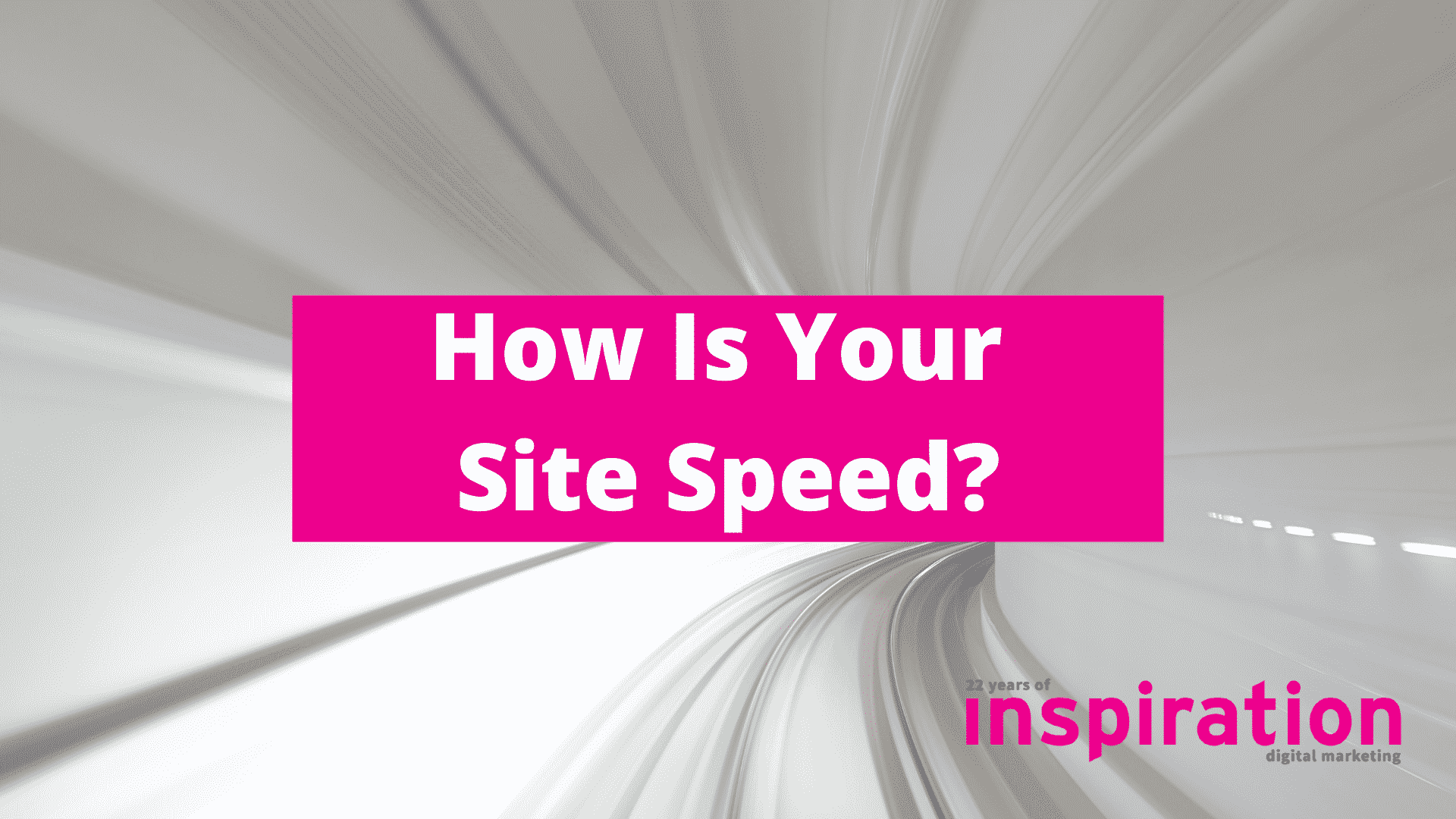Have a problem?
If you suspect your site is slower than it should be, check out the tools at the end of this article to help ID whether this is the case or not. But bear in mind most tools work on a page-by-page basis and may also give different results at different times of day etc. Take all results with a pinch of salt! But if your site definitely is too slow to load, there are a number of reasons why this may be the case.
This article has been written for non-technical site owners and managers to help you ID where the issue might be and who can help sort it……
How Important Is It?
Speed is critical in terms of getting your website to deliver results. A fast site speed results in a good user experience, while a slow site speed can be frustrating for site visitors, who have a low tolerance for waiting around! A visitor will typically stay on a site longer if the site speed is faster and they are also more likely to convert i.e. to make a purchase or make an enquiry. For these reasons, Google has made it a ranking factor which means that the speed of your site not only impact the user but it also impacts how easy it is to find your site in Google, when someone does a relevant search.
How Fast Should it Load?
In short, your website should load as fast as possible! Ideal website load time for mobile sites is 1-2 seconds. 53% of mobile site visits are abandoned if pages take longer than 3 seconds to load. A 2-second delay in load time can result in abandonment rates of up to 87%
What impacts website speed?
Domain Name System (DNS)
This is the set-up that resolves the domain name (website name) to a web server (a storage space) – so it’s a piece of code that tells the domain name where to find the website (and it tells email where to go etc.)
If the DNS isn’t set up properly, site speed can be significantly impacted. Usually it is the hosting supplier, and not your developer, who does this set-up initially – most developers don’t know too much about it and don’t necessarily have control. Things like changing from http:// to https:// (the S shows there is a security cert. on the site) are usually handled at DNS level and need to be done correctly to minimize impact on speed.
Scripting (Javascript CSS)
This is in the hands of the developer – less is more – the less scripting there is, the quicker the site will be. Scripts, like images, can also be compressed e.g. compression can remove blank spaces in code which makes the script much much smaller therefore it loads fast. Also where and when the script is loaded on the page is also a factor. A good developer will take care of these issues.
Tracking (analytics, tracking pixels etc.)
Most people have google analytics on the site – that’s an external script being pulled in – which adds load time to the site. There’s also tracking software like HotJar, LinkedIn pixels, Insta pixles etc – all of these are useful for analytics but they all add to load times. Just make sure if you have these services – that you need/use them; if not get rid of them. Or, where poss., get the developer to load all these scripts through Google Tag Manager (GTM) which combines them all effectively into one piece of script.
Image size (optimisation)
This is one of the most important factors that impacts speed for many sites. Both the size and weight of images needs to be optimised. Where possible images should be brought into the site at the actual size that is to be displayed. If you are managing a website and uploading images, make sure you are trained to do this properly. There are numerous tools that can be used; photoshop being the most popular. Use the latest image formats also e.g. we are all used to jpegs, png’s, gifs – but there are “next generation” file formats e.g. webp and SVG – these will be significantly smaller.
CDN (content delivery networks)
If your target audience is outside the country where your site is hosted – a content delivery network will speed it up by effectively keeping a local copy of your site in different territories. A CDN can be arranged by your developer and there are free versions or they can be bought at a minimal cost.
Caching
Regularly used images are saved automatically on your local machine – this speeds up the downloading process. It’s important that the developer implements the correct caching settings that will optimise speed.
And finally …
Hosting
The hosting set up is critical – you can’t expect world class performance from a 49.99 a year hosting.
There are plenty of good hosts out there and you do usually get what you pay for. If you have a busy site, you should be considering a VPS or dedicated server. If your site is wordpress, there are loads of specialist hosts who configure the hosting specifically for wordpress.
Useful Tools
http://gtmetrix.com/ – site speed checker
https://www.webpagetest.org/ – site speed checker
https://tinypng.com/ – image optimiser
https://tinyjpg.com/ – image optimiser
https://compressor.io/ – image optimiser
https://www.cloudways.com/ – a decent cloud based scalable host


